Sometimes you just come across a book that calls out to be profiled in our semi-regular “It came from the stacks” posts. ?áThis book does just that.
The Toothbrush: its Use and Abuse, a Treatise on Preventive Dentistry and Periodontia as Related to Dental Hygiene?áby Isador Hirchfeld, D.D.S., F.A.A.P. is a comprehensive tome on the history of the toothbrush and oral hygiene from ancient times to the books publication in 1939, the role of the toothbrush in treatment of oral condition, oral conditions that the toothbrush cannot cure, tooth brushing methods, and even the qualifications of a satisfactory toothbrush. ?áIndeed, this book uses every one of it’s 591 pages to impart valuable knowledge to the reader about the lowly toothbrush.
Readers of?áThe Toothbrush: its Use and Abuse will find chapters with such riveting titles as:
- “The Toothbrush in the Treatment of Suppurative Periodontoclasia (Pyorrhea)”
- “Traumatization of the Soft Tissues by the Toothbrush” (so jam packed it takes two chapters to cover)
- “Abnormalities of the Tooth Surface Induced by the Toothbrush and Various Other Agencies”
- “Tooth Brushing Methods in Common Use”
- “Care of the Toothbrush”
- and… “Cleansing of the Tongue”
On a more serious note, this book really is fascinating but perhaps not as the author intended at the time of publication. ?áThere are a large number of pictures illustrating the author’s assertions and descriptions of oral hygiene techniques and materials that we would shudder to think of in the present day.
The Toothbrush: its Use and Abuse is available for check out in the dental library.
The LSUHSC-NO Libraries would like to welcome Rita Premo to the Dental Library as our new Reference Librarian! Rita, originally from West Virginia, has worked in Washington DC and New Orleans. She comes to us from Ochsner Health System where she worked as a medical editor. She is happy to get back into working in a library.
Please join us in welcoming her. If you are in the area, stop to say hello and meet Rita!
The American Dental Association will be meeting in New Orleans October 31 – November 2, 2013. ?áIn conjunction with this meeting, they will be sponsoring Big Easy Smiles, a Mission of Mercy (MOM) providing free dental care on Sunday, November 3rd for the poor and underserved of New Orleans. ?áDuring the event, organizers hope to provide dental care to 1,000 people.
This first Mission of Mercy in Louisiana is a chance to give back to our beloved city and to show the community that we are willing and able to share our gifts with the poor. ?áNOLA Mission of Mercy organizers need 800 volunteers to get this done. ?áYou don’t have to be a dental health professional or student to help! ?áOrganizers are looking for dentists, hygienists, dental assistants, computer – IT, dental equipment technicians, patient ambassadors, food servers, clean-up crew and many other positions. ?áAnyone 18yrs or older can help!
If you, or someone you know, would like to help out, please go to the ADA Mission of Mercy site: ?áhttp://www.ada.org/session/8462.aspx
Please consider volunteering some of your time for this great cause!
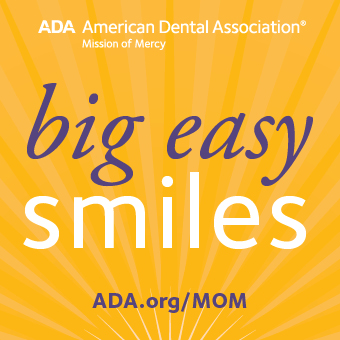
Some users new to RefWorks came across this message when attempting to install Write-n-Cite on their school laptops:
ÔÇ£Microsoft visual studio 2010 Tools for Office Runtime (x86) needs to be installed for this installation to continue.ÔÇØ
Write-n-Cite requires the users to have Microsoft Visual Studio 2010 installed on their computers.?á It is a free download available from the Microsoft website: ?áhttp://www.microsoft.com/en-us/download/details.aspx?id=35594
Once that program is installed, you may proceed with the?áinstillation?áprocess.
If you would like more information about RefWorks and Write-n-Cite please email the reference librarians, reference@lsuhsc.edu. ?áKeep an eye out for upcoming Introduction to RefWorks classes.
During the week of Mardi Gras, the Dental Library will have abbreviated hours:
Sunday 2/10 ?á ?á ?áClosed
Monday 2/11 ?á ?á 8 am – 5 pm
Tuesday 2/12 ?á ?á Closed (Enjoy the parades!)
Wednesday – Friday 2/13-2/15 ?á ?á ?á8 am-5 pm.
Our regular hours will resume on Sunday 2/17
Happy Mardi Gras!
Last week, MedlinePlus, the National Library of Medicine and National Institute of Health’s consumer health database, published the top 10 most?ávisited health topic searches?áof 2012:
Looking at these searches, it would seem that the public are?ásearching for information on?áthe most common health?áthreats in the?áUnited States.?á?áAccording to the Mayo Clinic, the top seven threats to women’s health are?áheart disease, cancer, stroke, chronic lower respiratory diseases, Alzheimer’s disease, accidents, and type 2 diabetes. The top seven threats to men’s health are similar:?áheart disease, cancer, accidents, chronic lower respiratory diseases, stroke, type 2 diabetes, and suicide.
Of course the most visited sites could also mean that people who were diagnosed with high blood pressure and diabetes started exercising?ábut they had trouble breathing, had heart palpitations,?ágot sunburned, and hurt their backs!
Speaking of politics…
The National Academies Press has just released its guide to the 2012 Science Debates.
U.S. science and engineering organizations came up with what they believed to be the most important science policy questions facing the United States in 2012. In the end, 14 questions were posed to the Presidential candidates, and their answers were posted side-by-side at ScienceDebate.org.
NAP has provided links to the Science Debate questions, a link to the candidatesÔÇÖ answers, and set of National Academies reports on the topics.?á The 14 topics covered in the debate are Climate Change, Research & the Future, Pandemics and Bio-security, Education, Energy, Food, Fresh Water, The Internet, Ocean Health, Science & Public Policy, Space, Critical Natural Resources, and Vaccination & Public Health.
And remember, all NAP resources are available to download for free or purchase in print from NAP.edu.
A recent article published in the International Journal of Paleopathology discusses the dental problems of a 2,100 year old mummy.?á 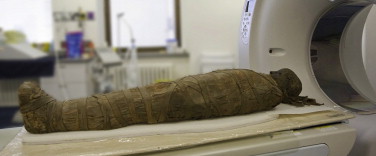
The mummy, named the Redpath Ptolemaic Theban Male, underwent CT scans and it was discovered he had a large amount of cavities.?á At least one of these cavities caused a sinus infection which probably led to his untimely demise.
The CT also revealed that the man received treatment for his dental woes which would have caused him extreme pain.?á There were pieces of linen, most likely soaked with cedar oil, inside one of his cavities.
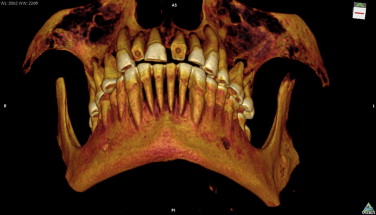
You can read about this story on LiveScience or take a look at the abstract for the paper from ScienceDirect.?á Unfortunately, LSUHSC-NO doesn’t have full text access to this journal, but you can request it from a library using ILLiad, our interlibrary loan service.
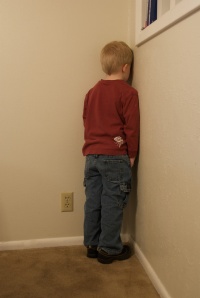
51 journals were given "time-outs" from the Impact Factors
Last week, Thompson Reuters published the 2011 edition of Journal Citation Reports, otherwise known as the Journal Impact Factors.?á Several things are new about this newest edition of JCR such as?á increased coverage of regional journals and the addition of 526 new journals to the Impact Factor rolls.?á However, one new factor, while positive for JCR, was not very positive for journal publishers.?á JCR removed 51 journals for “anomalous citation patterns,” aka: systemic self-citation.
How do these “anomalous citations patterns” occur??á There are several ways:
1.?á Editors may require authors to cite articles in the publishing journal.
2.?á An editor may publish a short review article citing every article in the journal published within a certain time period.
3.?á An editor may publish a bibliometric study of the papers published in the?á journal and then cite each paper.
4.?á Several journals may cooperate to form a “citation cartel” whereby the journals cite each other in order to raise their impact factors.?á These cartels can be much more difficult to detect because the citations are not just self-cites, they contain cites in several journals.
Although these journals were removed from the JCR for 2011, they will have a chance to return to the impact factor rolls when their citation patterns return to a similar pattern to other journals within their field.
According to Thompson Reuters:
“Suppressed titles were found to have anomalous citation patterns resulting in a significant distortion of the Journal Impact Factor, so that the rank does not accurately reflect the journalÔÇÖs citation performance in the literature. The Journal Impact Factor provides an important and objective measure of a journalÔÇÖs contribution to scholarly communication, and its distortion by an excessive concentration of citations is a serious matter. JCR staff will monitor these journals going forward and the titles will be included in a future edition of JCR when the problem of citation concentration has been resolved.”
Whatever you may feel about the validity and usefulness of a journal’s Impact Factor, this year’s JCR demonstrates that Thompson Reuters attempts to uphold high standards in scholarly publishing.
For more information about the Citation Cartels, check out The Scholarly Kitchen.
LSUHSC affiliated patrons can access the newest Journal Citation Reports through this link.
Are you or your patients having strange symptoms after taking an new herbal supplement??á Natural Standard can help!
Natural Standard, a source for?á high-quality, evidence-based information about complementary and alternative medicine, announced today the release of their new Adverse Effects Checker.
Simply check off the symptoms and the Adverse Effects Checker will provide a list of dietary supplements that may be causing those symptoms.

Americans who turn up in the emergency room to get dental care aren’t lost, they’re probably just running out of options.
According to a new report from the Pew Center on the States more than 800,000 visits to the ER in 2009 were for toothaches and other avoidable dental ailments.
What effect will this have on the future of dental care??á It really depends on who you are talking to:
This is NPR’s view.
This is the ADA’s view.
The dental library will have reduced hours for the week of Mardi Gras.
- Sunday, February 19:?á Closed
- Monday, February 20:?á 8:00am – 5:00pm
- Tuesday, February 21:?á Closed
- Wednesday, February 22:?á 8:00am – 5:00pm
- Thursday, February 23:?á 8:00am – 5:00pm
- Friday, February 24:?á 8:00am – 5:00pm
We will resume regular hours on Sunday, February 26.
Happy Mardi Gras!!!

Congratulations to Liz Strother, Associate Director for Dental Library Services, on her academic promotion to Professor/Librarian. Liz has worked long and hard to merit this most deserved promotion!
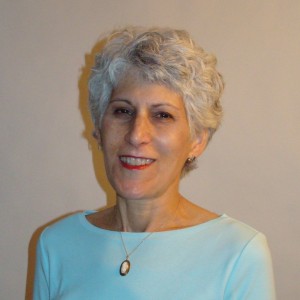
Liz has worked at LSUHSC for more than 30 years, she has more than 30 publications to her credit and has taught classes to dental students for many years. She has served the University in many ways and has been on more than 30 committees in service to professional organizations.
We, here in the library, are very proud of you, Liz!!
LSUHSC-NO School of Dentistry Library honors the Dental Assistants that make our clinics great. Thank you!
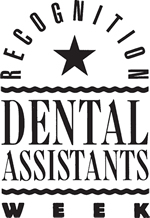
Contributing to quality dental care, todayÔÇÖs dental assistants are role models of professional development. Strengthening the entire dental team, they enhance patient satisfaction throughout the world.
March 6-12, 2011, has been designated by the American Dental Assistants Association, along with the American Dental Association, the Canadian Dental Association and the Canadian Dental AssistantsÔÇÖ Association, as the perfect time to acknowledge and recognize the versatile, multitalented member of the dental teamÔÇöyour Dental Assistant.

America’s Health Rankings?« has been tracking the state of our nation’s health for over 20 years. This analysis provides a comprehensive perspective on our national health issues, state by state.
America’s Health Rankings?«-2010 Edition shows Vermont at the top of the list of healthiest states again this year. Massachusetts is ranked second this year, an improvement from ranking third last year. New Hampshire is number three, followed by Connecticut and Hawaii. However, although Mississippi is 50th and the least healthy state, Louisiana is 49th. Arkansas, Nevada and Oklahoma complete the bottom five states.
Louisiana dropped two spots from last year due to several factors including a high rate of obesity and smoking. On the positive side, Louisiana has a high ranking for access to prenatal care and childhood immunizations. Stay Healthy, Louisiana has a great summary of the state’s ranking.

 myLSUHSC
myLSUHSC







